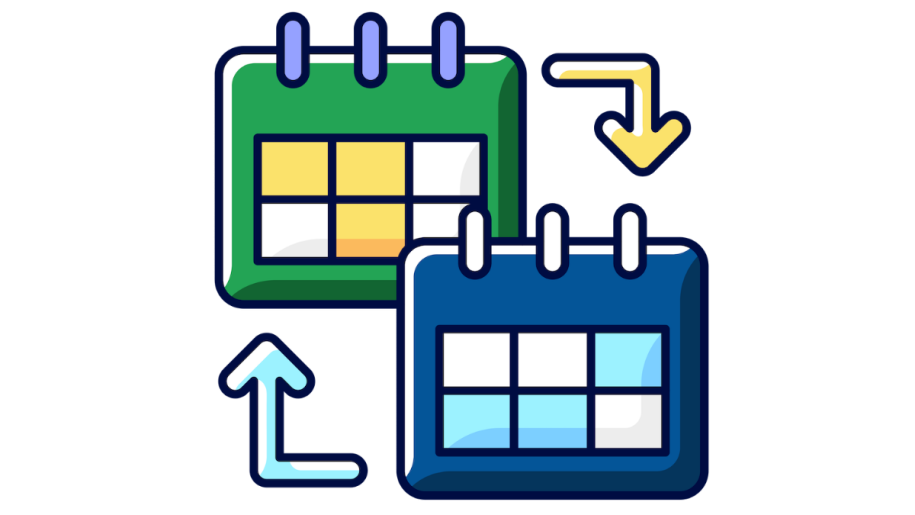Allowing employees and professionals to swap shifts is crucial as workspaces evolve. It is also necessary for workers to be comfortable handling multiple responsibilities without compromising standards.
Performing this task for team leaders may be quite challenging. However, the entire process is easy with the Team2Book Availability Scheduling App.
This software allows employees and professionals to swap shifts by making requests through the app. If the worker accepts the request, the proposed shift swap goes to the team manager for final approval.
Keep reading this article to swap shifts with Team2Book.
Advantages of Allowing Employees and Professionals to Swap Shifts
To run a successful organization, you must allow for shift swapping. Doing this offers you several benefits. Below are a few advantages to consider.
Improves Staff Retention and Satisfaction
Overall, being able to swap shifts positively impacts employees and professionals. It gives workers control over their time and what they do with it. By extension, this freedom enhances overall staff retention and satisfaction.
Furthermore, staff who can easily adjust their schedules significantly feel empowered and more valued. Also, it gives them time to manage their personal affairs, which minimizes disruption to workflow. As such, it makes them more likely to stay longer in a job that gives them the flexibility to manage their lives.
Streamlines Scheduling
Manually managing scheduling is challenging for team managers, employees, and professionals. It is stressful and can sometimes become confusing to rearrange multiple scheduling changes, shift changes, and time off requests simultaneously.
For employees and professionals to swap shifts efficiently, an organization should invest in the right technology. Using this tool gives workers the flexibility to change shifts with coworkers. As a result, leveraging technology minimizes administrative processes, ensures shift coverage, and maintains productivity.
Staff Different Shift Swapping Requirements
Depending on the organization you run, you may have a combination of employees and professionals under your management. For effective shift-swapping, you must understand the distinction between employees and professionals. Highlighted below are a few differences to consider when allowing employees and professionals to swap shifts.
- Employees handle general and administrative tasks, which require fewer qualifications. On the other hand, professionals spend years polishing their skill sets for specific responsibilities.
- Professionals like nurses, doctors, and engineers often have irregular working hours that may frequently need shift swaps. In most cases, employees perform their tasks on a regular schedule.
From these differences, employees and professionals need to swap shifts. However, the priority lies with professionals who often have less control over their scheduling. Nonetheless, employees should also have the flexibility to adjust their time at the office to handle:
- Educational commitments;
- Medical appointments;
- Childcare responsibilities;
- Personal time.
For many team leaders, allowing employees and professionals to swap shifts may feel challenging to manage. In addition, many workers do not understand the complex process of requesting shift swaps from their managers.
When Shift Exchange is Not Ideal
Although shift swapping is excellent for productivity, it is not always ideal. Below are situations to consider.
- Industries with strict labor and compliance regulations cannot freely implement shift exchange to prevent legal problems.
- Emergency and healthcare personnel may not always have the freedom to adjust their scheduling, especially when they become experts in their respective fields. The same goes for individuals with industry training and skills for several years.
Team Leaders Workload

Allowing employees and professionals to swap shifts is automatically more work for team leaders and managers. To maintain order and ensure shift coverage, they must review, approve, and reject shift exchange requests.
Although the increase in workload may feel exhausting, there are several benefits to consider. In most cases, effective management of shift swapping should streamline physicians scheduling, reduce turnover, increase worker retention, and maximize work satisfaction. Furthermore, the Team2Book shift swapping option simplifies all these complexities. It makes the initiation, acceptance, and approval of shift swap requests easy for employees, professionals, and their managers, respectively.
Staff Availability When Building Schedules

Depending on your organization, you may create schedules a week, a month, or multiple months in advance. Doing this informs every staff what they need to do in the future.
However, apart from allowing employees and professionals to swap shifts, it is equally crucial they have the flexibility to set availability before scheduling occurs. Doing this minimizes the need for future shift swaps.
The Team2Book App gives users the ability to mark themselves as unavailable in the shared team calendar. Doing this makes team leaders’ jobs easy as they receive fewer future shift swap requests from employees and professionals.
The Need for Shift Exchange Authorization Process
If shift exchanges occur without authorization process, workers will do as they please. In some cases, multiple shifts will be without cover.
Therefore, a team manager must be in charge of any shift swap authorization process. Using a formal system offers the following benefits.
- Prevents confusion and allows workers to know their schedules and make plans accordingly.
- Allows organizations to comply with lab regulations and laws.
- Helps team leaders keep accurate track of hours, which simplifies payroll compilation.
- Allows for a transparent and fair process that prevents favoritism and consistent assignment of unfavorable shifts.
Managing Shift Swap with Team2Book
Team2Book offers a simple process for managing and authorizing shifts. A worker can easily send a shift exchange request via the Customer Dashboard.
After submission, the request will show up on the shift exchange list for the other worker to see. Moreover, the staff also receives a shift exchange request email.
Once they accept the request, the team leader receives an email seeking their authorization. Also, the shared team calendar will automatically update to reflect the people covering swapped shifts once the manager approves the request. Check out the Consumer Dashboard: Shift Exchanges tutorial for a detailed explanation of how you can manage shift swaps with Team2Book.
Conclusion
There are multiple benefits to allowing employees and professionals to swap shifts. Furthermore, there are differences in shift-swapping requirements between employees and professionals.
Shift exchange is not always ideal, especially in healthcare and industries with strict labor regulations and laws. In addition, knowing staff availability when creating schedules can reduce the need for shift swaps.
However, having a shift exchange authorization process is essential for maintaining payroll accuracy, adherence to rules, preventing confusion, and promoting transparency and fairness.

